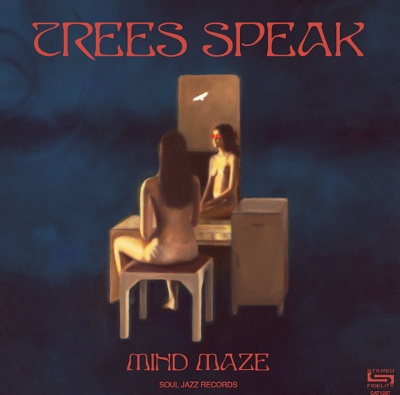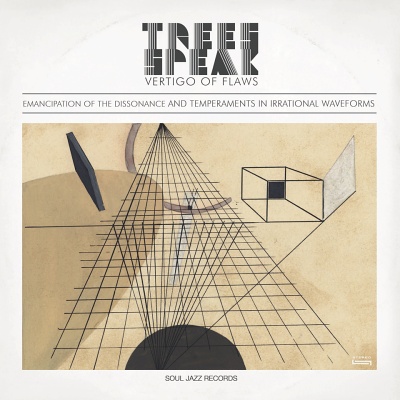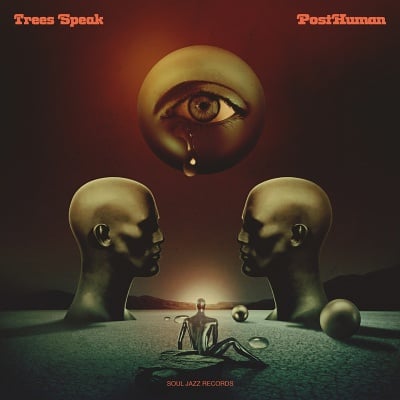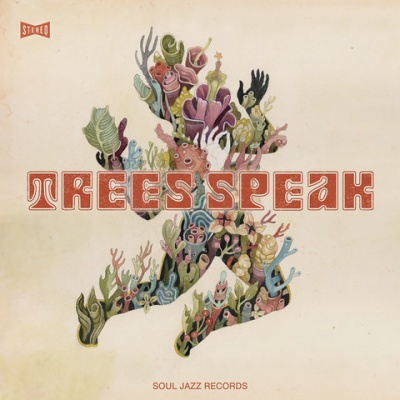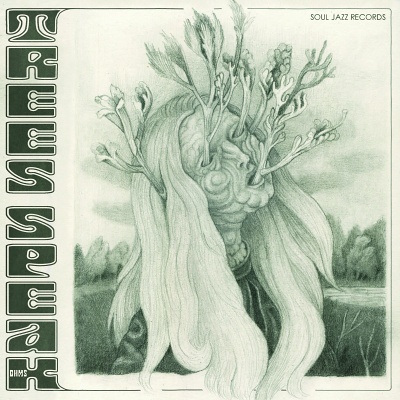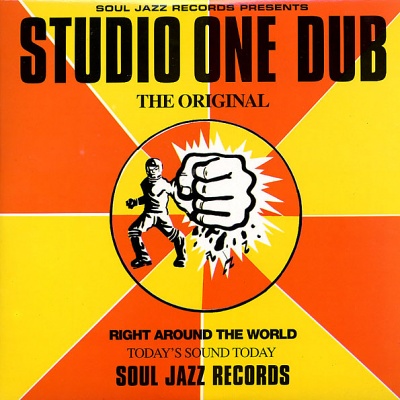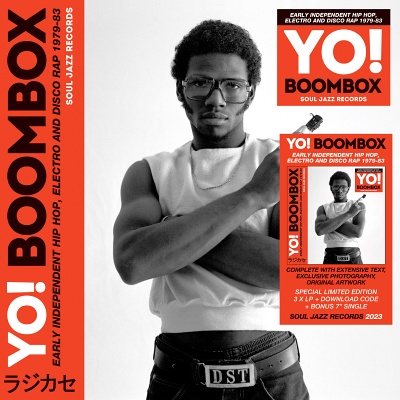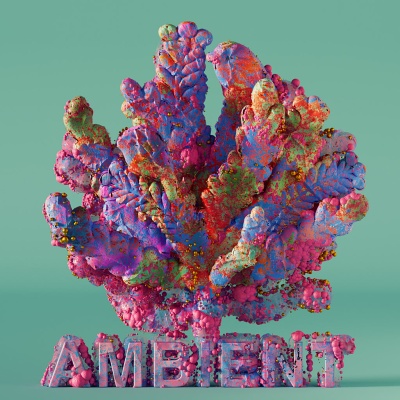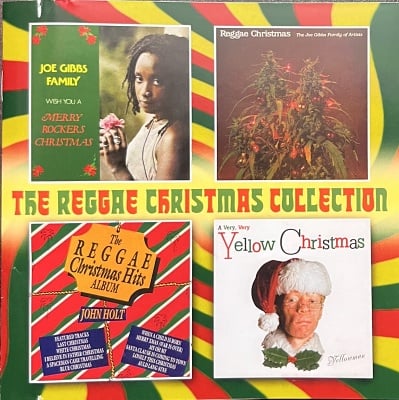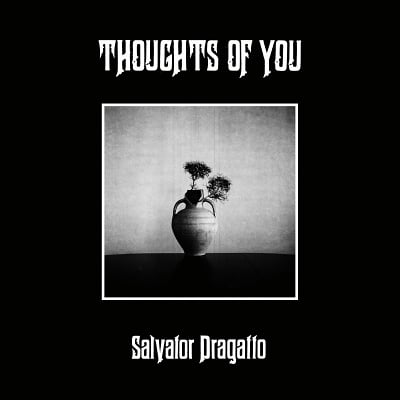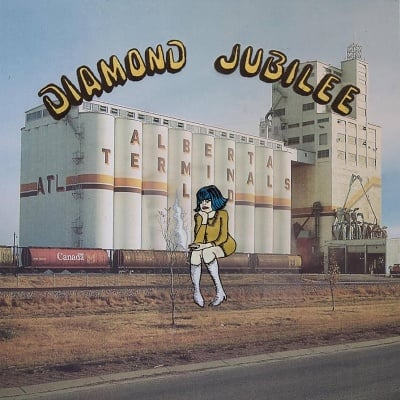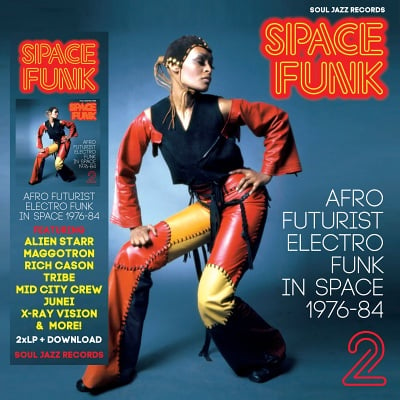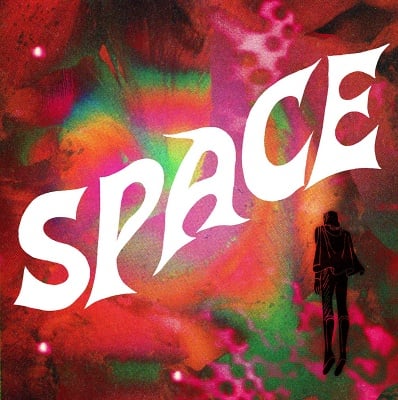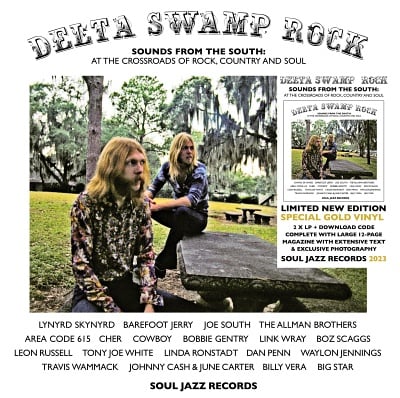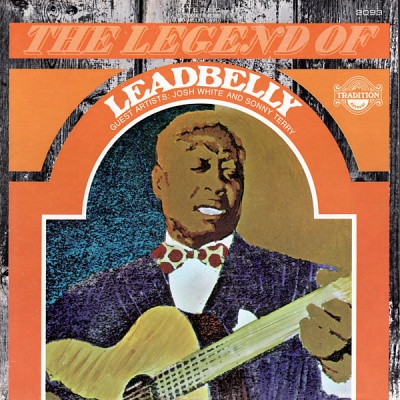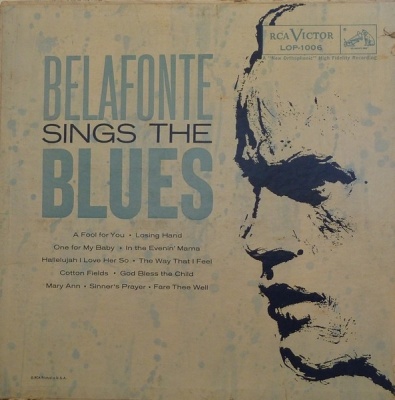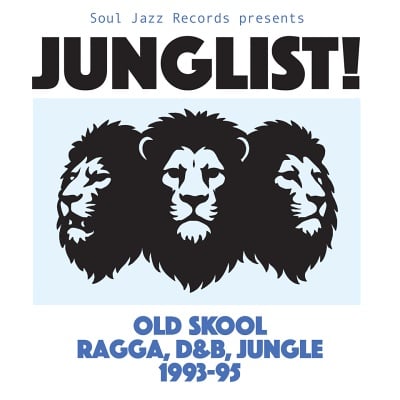
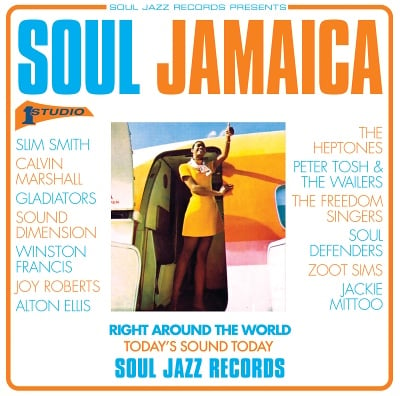
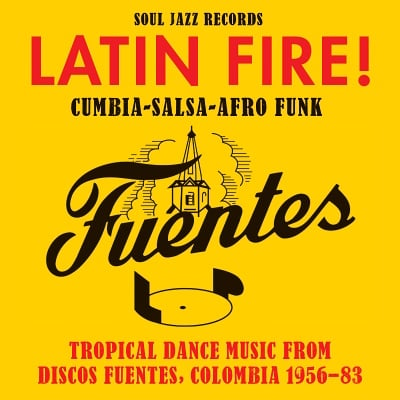
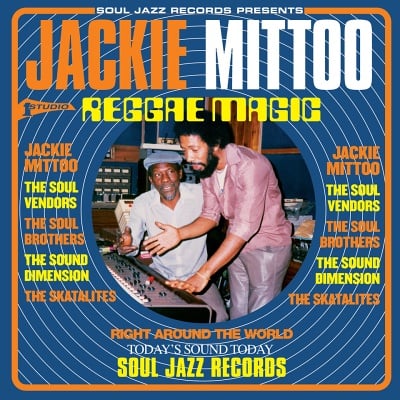
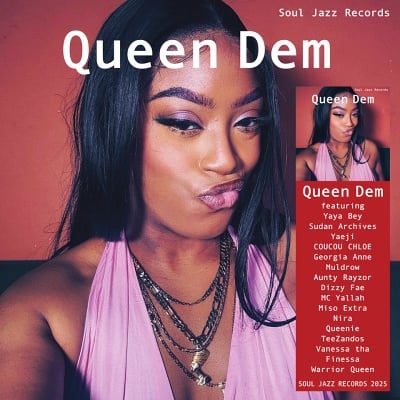

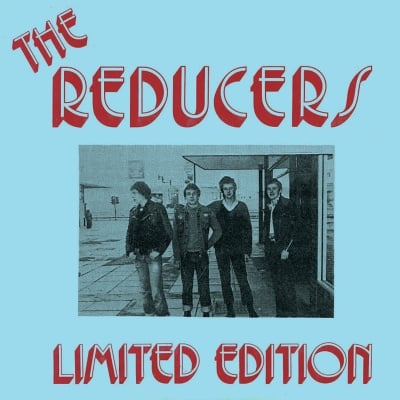
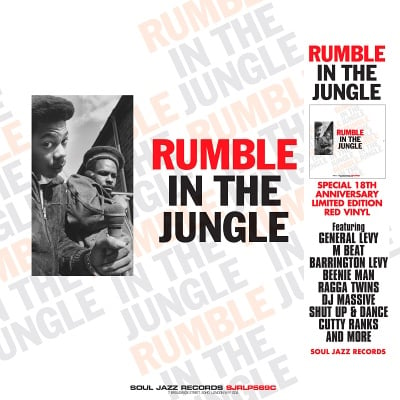
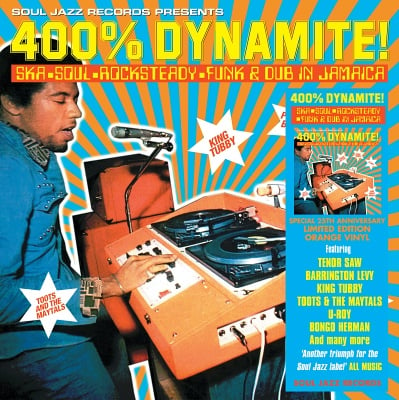
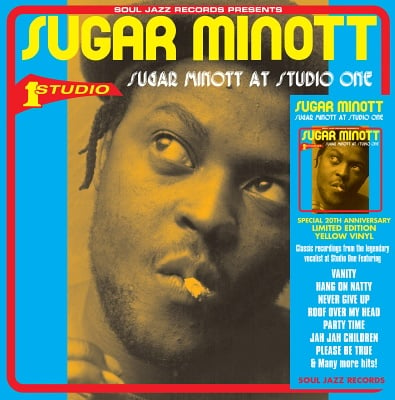
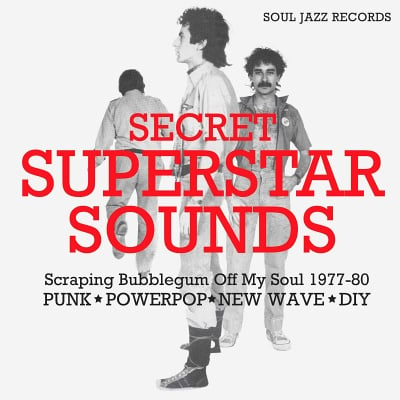
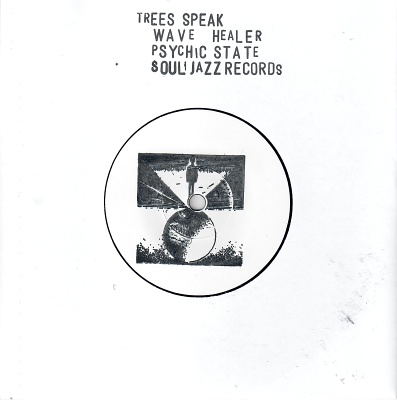
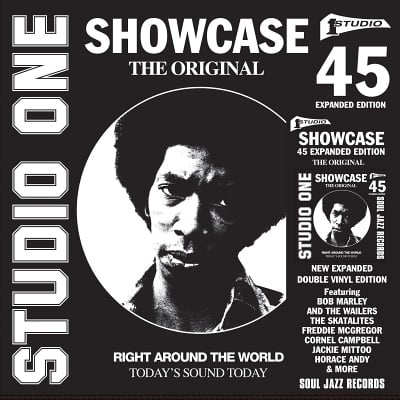
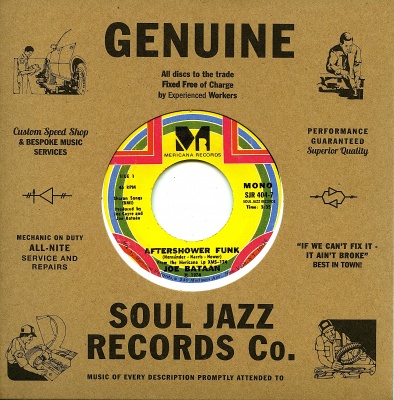
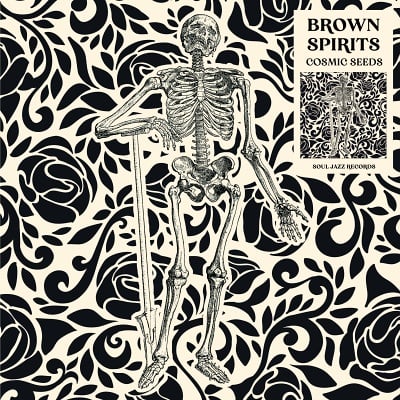
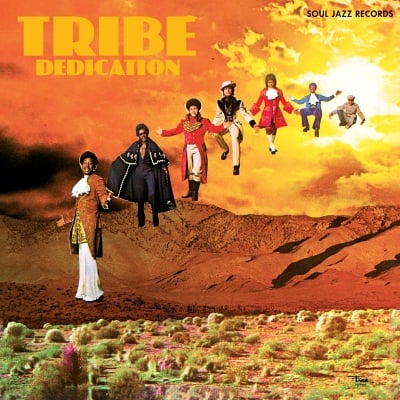
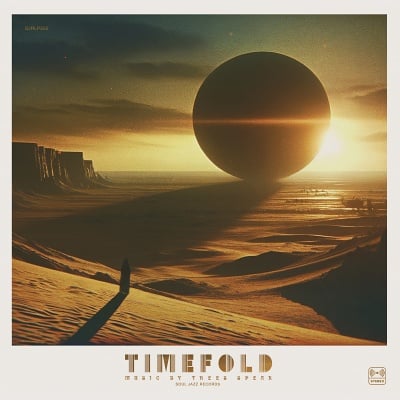
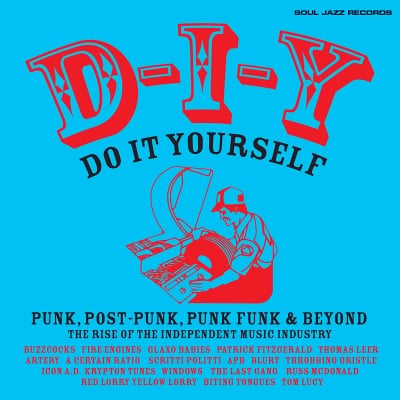
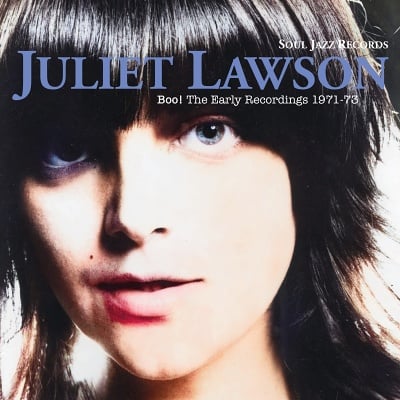
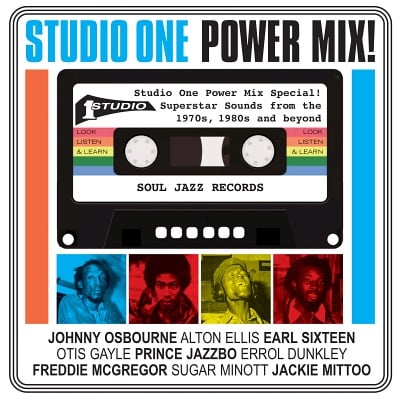
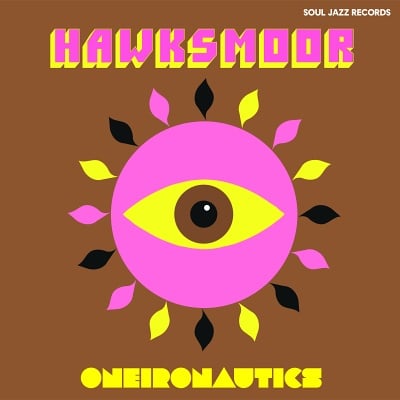
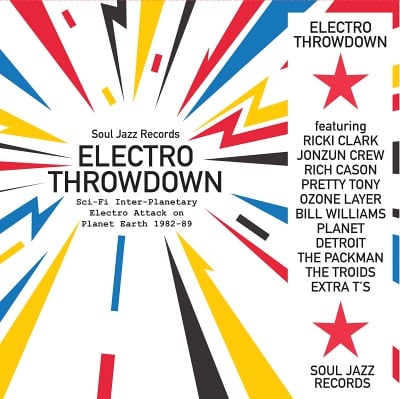
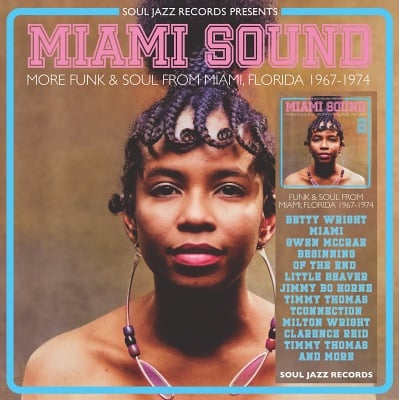
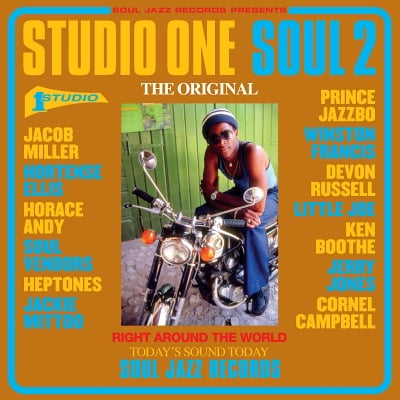
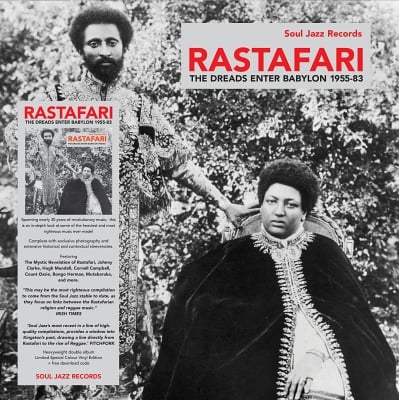
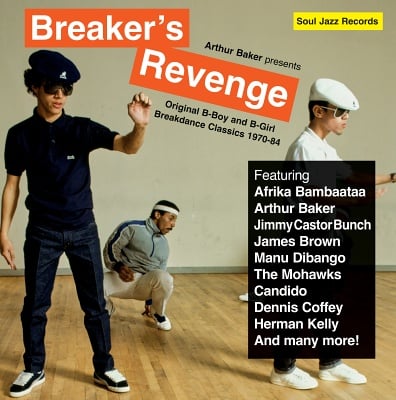
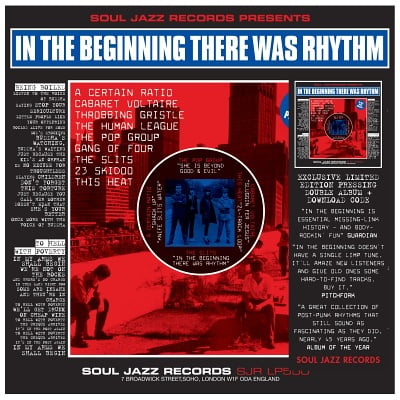
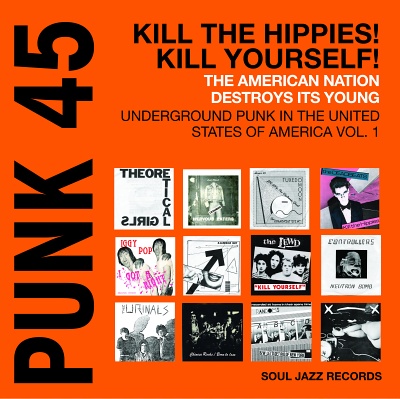
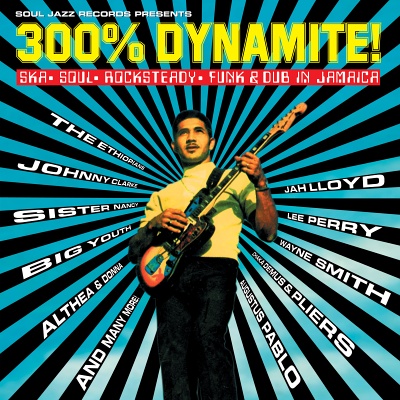
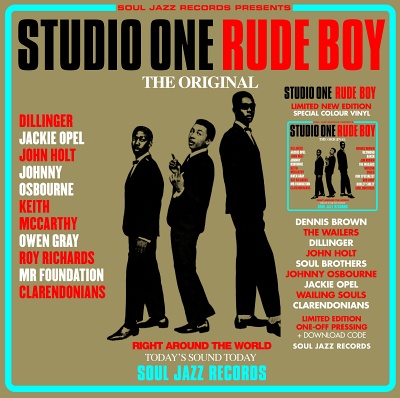
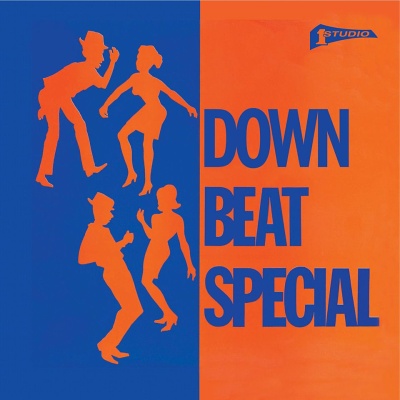
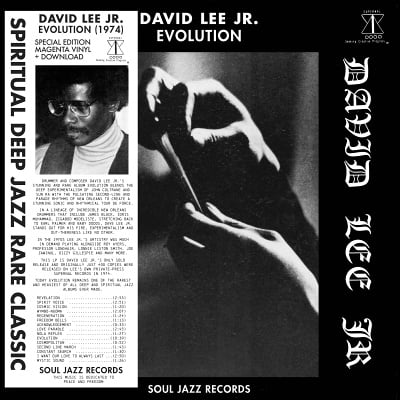
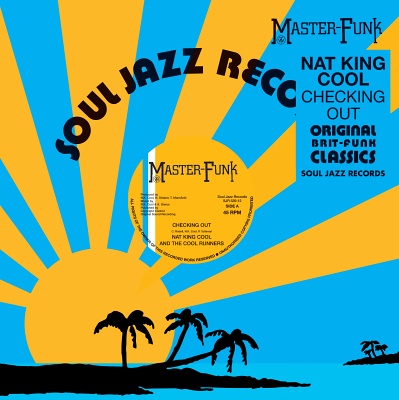
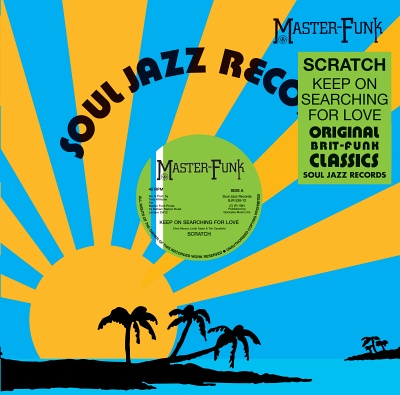
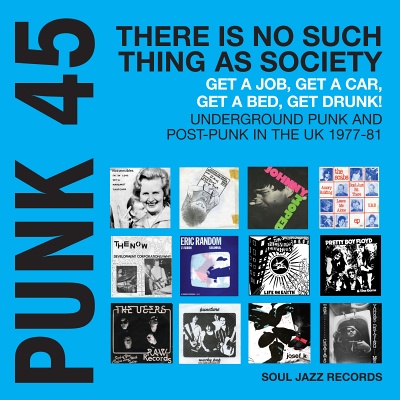

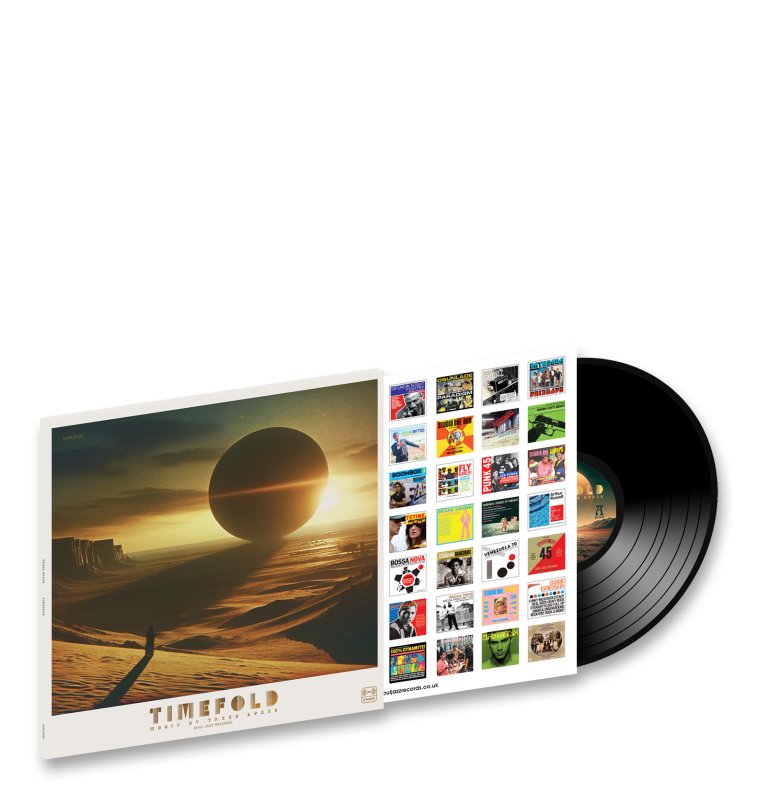
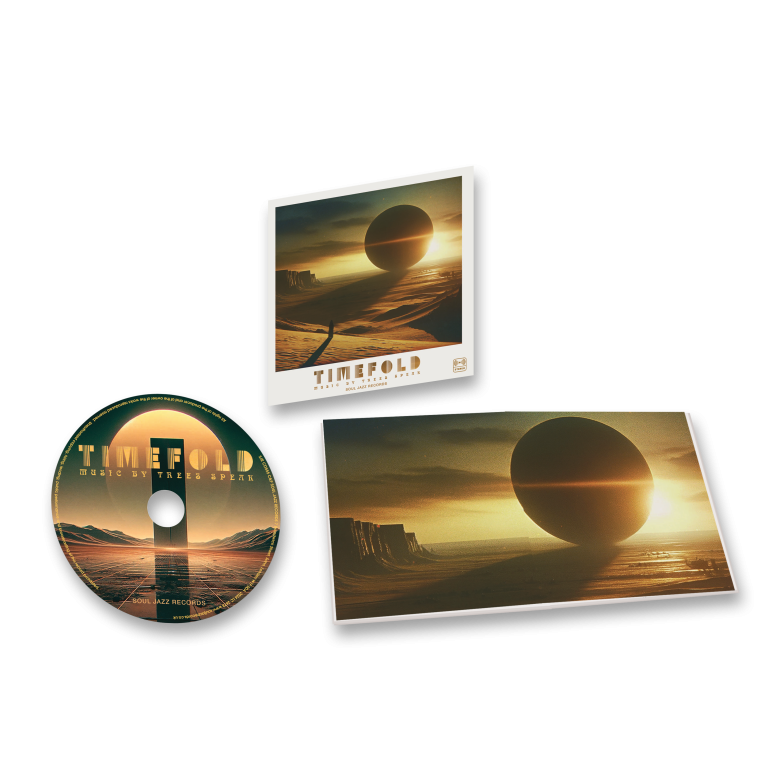
- LP + Download Code SJRLP555£26.00In stockAdd to Bag
- CD SJRCD555£12.00In stockAdd to Bag
- MP3 Release SJRD555£9.99In stockAdd to Bag
- Trees Speak – TimeFold
- Trees Speak – Prodrome
- Trees Speak – Digital Oracle
- Trees Speak – Emotion Engine
- Trees Speak – Phenomena
- Trees Speak – Psychic State
- Trees Speak – Xenoworld
- Trees Speak – Post-Truth
- Trees Speak – Chronosphere
- Trees Speak – Among Us
- Trees Speak – Entity System
- Trees Speak – Cybernetics
- Trees Speak – They Know
- Trees Speak – Synchrotron
- Trees Speak – Dreamless
- Trees Speak – Silicon Visions
- Trees Speak – Forever Chemicals
Trees Speak return with TimeFold, their sixth release on Soul Jazz Records, further expanding their ever-evolving sonic universe. This new album builds on their signature blend of hypnotic krautrock rhythms, post-punk angularity, and experimental soundscapes while venturing into new terrain by blending influences from avant-garde electronics to ceremonial sound forms.
On TimeFold, Trees Speak (comprised of the Tucson-based duo Damian Diaz and Daniel Martin Diaz) push their musical boundaries from expansive, intergalactic landscapes to eerie, imagined 1970s Italian and French sci-fi horror film scores. The album seamlessly weaves John Carpenter-esque synthesizer motifs with ambient sound sculptures, conjuring immersive worlds that are both cinematic and otherworldly.
The album also incorporates the duo’s deep-rooted influences, which span across electronic pioneers like Jean-Michel Jarre (Oxygene), Tangerine Dream, and Karlheinz Stockhausen. Drawing on the revolutionary techniques of Musique Concrète, TimeFold features experimental track splicing, looping, and collage work that harkens back to the golden age of avant-garde music. At times, the album channels the ceremonial tones and hypnotic rhythms reminiscent of early 1970s krautrock, fusing these sounds with organic instrumentation like dulcimers, adding an earthy, drone-like ritual quality to the experimental electronic framework.
A new element in this release is the inclusion of spoken word by Ashley Christine Edwards, which lends the album a haunting, apocalyptic edge. Her contributions evoke a tone reminiscent of the 1970s avant-garde scene, recalling literary and conceptual artists like Ruth White. The spoken words create a sensory experience akin to ceremonial chants, adding to the atmospheric intensity of the album. These vocal elements tie into the overall theme of TimeFold, which continues Trees Speak’s exploration of futuristic technologies and the communication of nature, with the evocative concept of trees and plants acting as organic hard drives storing data and knowledge.
Drawing further influence from Italian and French horror cinema, Trees Speak explore cinematic tension throughout TimeFold, creating a layered listening experience. The record transports the listener from the haunting, desolate beauty of Southwestern desert vast landscapes to an auditory space that melds early electronic experimentation with the contemporary urgency of conceptual art.
Since their debut Ohms in 2020, Trees Speak’s prolific output on Soul Jazz Records has continually redefined genre boundaries. TimeFold solidifies their position as visionaries in experimental music, offering an album that is as much a meditation on future technologies as it is a tribute to the avant-garde traditions that have come before.
REVIEWS
'Feels like an epic, demonstrating the Diaz brothers' capacity for suggesting scale while resisting the temptation to sprawl.' The Wire
“Trees Speak’s soundworld is ever-changing, often terrifying, but rarely short of awe-inspiring" ⭐️⭐️⭐️⭐️ Mojo January 2025
Uncut Article:
"Daniel Martin Diaz and Damian Diaz, are clearly connoisseurs of vintage krautrock and analogue synthtronica, they also cite Stockhausen, Satie, John Cage and Klaus Schulze. "It's about how they treated sound," says Daniel, "like sculptors shaping something out of nothing."
The latest Trees Speak album, TimeFold, is the first to feature spoken-word artist Ashley Christine Edwards. "She brings a fearless, experimental edge that pushes us in new directions, especially live," Damian explains. "Her openness to explore any idea, no matter how out there, has been important for us."
The album also boasts a typically gorgeous sci-fi sleeve designed by Daniel, who has a side career as a visual artist. The graphics, he says, are as essential as the music. "We obsess over every detail: the fonts, the subject matter, even the empty space."
With Daniel still based in Tucson and Damian now settled in Brooklyn, Trees Speak insist both locations have subliminally shaped their music. "The desert definitely seeps into our sound," says Daniel. "The vast open spaces, the quiet, stretching moments. But there's also an undercurrent of tension, a sense of something hidden beneath the surface.” Uncut
- – Wave Healer
- – Psychic State
- 1. – Wave Healer
- 2. – Psychic State
- View full info and tracklisting
- 7" SJR565-7£10.00In stockAdd to Bag
- Trees Speak – Mind Maze
- Trees Speak – Minotaur
- Trees Speak – Syndrome
- Trees Speak – Sospetto
- Trees Speak – Illusions
- Trees Speak – Scanner
- Trees Speak – Burner
- Trees Speak – Rare Earth
- Trees Speak – Pathways
- Trees Speak – Skip Breath
- Trees Speak – Odyssey
- Trees Speak – Passage
- Trees Speak – Signals
- Trees Speak – Black Phone
- Trees Speak – Mirror
- Trees Speak – Stone Tape
- Trees Speak – Seraphim
- Trees Speak – Orpheus
- Trees Speak – Machines Speak
- 1. Trees Speak – Mind Maze
- 2. Trees Speak – Minotaur
- 3. Trees Speak – Syndrome
- View full info and tracklisting
- Limited Edition LP + Free 7" + Download Code SJRLP527£28.00In stockAdd to Bag
- CD SJRCD527£12.00In stockAdd to Bag
- MP3 Release SJRD527£8.99In stockAdd to Bag
- Trees Speak – Seventh Mirror
- Trees Speak – Cybernetic Dreams
- Trees Speak – Interference
- Trees Speak – Computer Garden
- Trees Speak – Pyramid
- Trees Speak – Halide Crystals
- Trees Speak – Integratron
- Trees Speak – Imaginary Forces
- Trees Speak – Phantom LFO
- Trees Speak – Opticks
- Trees Speak – Mannequin
- Trees Speak – Mind In Light
- Trees Speak – Palantír
- Trees Speak – Vertigo Of Flaws
- Trees Speak – Exit Syndrome
- Tress Speak – Stasi
- Tress Speak – Atomic Voyage
- Tress Speak – Ultraviolet
- Tress Speak – Violence Cascades
- Tress Speak – Traumsprache
- Trees Speak – Zeitgeber
- Trees Speak – Prism
- Trees Speak – Threnody
- Trees Speak – Mind Oscillation
- Tress Speak – Hidden Machine
- Trees Speak – Transhuman
- Trees Speak – Ionization
- Trees Speak – Cloud Chamber
- Tress Speak – Harmonic Oscillator
- Tress Speak – Transfiguration
- Trees Speak – Urzeit
- 1. Trees Speak – Seventh Mirror
- 2. Trees Speak – Cybernetic Dreams
- 3. Trees Speak – Interference
- View full info and tracklisting
- 2xLP + 7"+ Download Code SJRLP498£28.00In stockAdd to Bag
- CD SJRCD498£12.00In stockAdd to Bag
- MP3 Release SJRD498£9.99In stockAdd to Bag
- Trees Speak – Double Slit
- Trees Speak – Glass
- Trees Speak – Chamber of Frequencies
- Trees Speak – Divided Light
- Trees Speak – Elements of Matter
- Trees Speak – Magic Transistor
- Trees Speak – Scheinwelt
- Trees Speak – PostHuman
- Trees Speak – Synthesis
- Trees Speak – X Zeit
- Trees Speak – Incandescent Sun
- Trees Speak – Healing Rods
- Trees Speak – Steckdose
- Trees Speak – Amnesia Transmitter
- Trees Speak – Quantize Humanize
- Trees Speak – Gläserner Mensch
- Trees Speak – Machine Vision
- Trees Speak – Hidden Machine
- 1. Trees Speak – Double Slit
- 2. Trees Speak – Glass
- 3. Trees Speak – Chamber of Frequencies
- View full info and tracklisting
- LP SJRLP469£25.00In stockAdd to Bag
- CD SJRCD469£12.00In stockAdd to Bag
- MP3 Release SJRD469£7.99In stockAdd to Bag
- Trees Speak – Large Array
- Trees Speak – Tear Kisser
- Trees Speak – Those Who Know
- Trees Speak – Transforming
- Trees Speak – Automat
- Trees Speak – False Ego
- Trees Speak – Communication
- Trees Speak – Crystal System
- Trees Speak – Agonize Signal
- Trees Speak – Magick Knives
- Trees Speak – Shadow Forms
- Trees Speak – Outtake 3
- Trees Speak – Transmitter
- 1. Trees Speak – Large Array
- 2. Trees Speak – Tear Kisser
- 3. Trees Speak – Those Who Know
- View full info and tracklisting
- LP SJRLP457£24.00In stockAdd to Bag
- CD SJRCD457£12.00In stockAdd to Bag
- MP3 Release SJRD457£7.99In stockAdd to Bag
- Trees Speak – Soul Sequencer
- Trees Speak – Nitrous Cross
- Trees Speak – Shadow Circuit
- Trees Speak – Blame Shifter
- Trees Speak – Spirit Duplicator
- Trees Speak – Nobody Knows
- Trees Speak – Sadness In Wires
- Trees Speak – State Of Clear
- Trees Speak – Sleep Crime
- Trees Speak – Knowing
- Trees Speak – Splendid Sun
- Trees Speak – Ohms
- Trees Speak – Out Of View
- Trees Speak – Psychic Wounds
- Trees Speak – Silicone Emotions
- Trees Speak – Octave Cycle
- Trees Speak – Witch Wound
- 1. Trees Speak – Soul Sequencer
- 2. Trees Speak – Nitrous Cross
- 3. Trees Speak – Shadow Circuit
- View full info and tracklisting
- LP SJRLP453£24.00In stockAdd to Bag
- CD SJRCD453£12.00In stockAdd to Bag
- MP3 Release SJRD453£7.99In stockAdd to Bag
- M-Beat – Surrender
- Cutty Ranks – Original Ranks (Just Jungle Remix)
- DJ Vern and DJ Ash – Squeeze
- Dub Two (Bizzy B & TDK) – Big Things
- Redrose – Jungle Tempo
- Krome & Time – Ruffneck Scouts
- Terror Fabulous – Ragga Ragga Ragga (Whitehouse Crew Remix)
- M-Beat – Rumble
- Brainkillers – Screw Face
- Poison Chang – Love The Woman (DJ Rap Remix)
- Bizzy B & MT – Dub Select
- Top Cat – Bunn The Sensi (Dub Hustlers Remix)
- Josey Wales, Beenie Man & Ini Kamoze – Build Me 3 Coffins (New Blood Crew Remix)
- Lemon D – Jah Love
- 1. M-Beat – Surrender
- 2. Cutty Ranks – Original Ranks (Just Jungle Remix)
- 3. DJ Vern and DJ Ash – Squeeze
- View full info and tracklisting
- Alton Ellis – Tumbling Tears
- Winston Francis – Turn Back The Hands Of Time
- Sound Dimension – Sing A Simple Song
- The Gladiators – Fling It Gimme
- Jackie Mittoo – Soul Finger
- Winston Francis – Groovy Situation
- Calvin Marshall – La La 69
- Soul Defenders – Way Back Home
- The Heptones – Young, Gifted and Black
- Im and David – Up Fully
- Slim Smith – Keep That Light
- Sound Dimension – Give It Away
- Zoot Simms – Real Gone Loser
- Sound Dimension – Soul Bowl
- Peter Tosh and The Wailers – Can’t You See
- Joy Roberts – Someday We’ll Be Together
- The Freedom Singers – Give Peace A Chance
- 1. Alton Ellis – Tumbling Tears
- 2. Winston Francis – Turn Back The Hands Of Time
- 3. Sound Dimension – Sing A Simple Song
- View full info and tracklisting
- 2xLP (+ Download Code) SJRLP574£28.00 £22.40In stockAdd to Bag
- CD SJRCD574£12.00 £9.60In stockAdd to Bag
- MP3 Release SJRD574£9.99In stockAdd to Bag
- Fruko y Sus Tesos – El Vidriero
- Climaco Sarmiento y Su Orquesta – Guiro y Guacharaca
- Afrosound – El Regresso De E.T.
- Los Corraleros de Majagual – Cumbia Campesina
- Wganda Kenya – Shakalaode
- Afrosound – La Sampuesana
- Peregoyo y Su Combo Vacana – Descarga Vacana
- Fruko y Sus Tesos – Salsa Na Ma
- Wganda Kenya – Fiebre De Lepra
- Latin Brothers – Duelo De Picoteros
- Pedro Laza y Sus Pelayeros – Navidad Negra
- Afrosound – Carruseles
- Los Alegres Diablos – La Magdalena
- Latin Brothers – No Es Negra Es Morena
- La Sonora Cienaguera – La Piojosa
- Fruko y Sus Tesos – Cantando Mi Son Muero
- Juan Piña y Sus Muchachos – La Nena
- Afrosound – La Danza De Los Mirlos
- Michi Sarmiento y Su Combo Bravo – Salsa Con Monte
- Conjunto Lirico Vallenato – Cumbia Cienaguera
- 1. Fruko y Sus Tesos – El Vidriero
- 2. Climaco Sarmiento y Su Orquesta – Guiro y Guacharaca
- 3. Afrosound – El Regresso De E.T.
- View full info and tracklisting
- 2xLP + Download Code SJRLP577£28.00Out of stock Notify me when in stock
- CD SJRCD577£12.00In stockAdd to Bag
- Jackie Mittoo – Melody Maker
- The Soul Vendors – Full Range
- Jackie Mittoo – Ghetto Organ
- Jackie Mittoo – Toronto Express
- Jackie Mittoo – Black Out
- Jackie Mittoo – Fireball Rock
- Jackie Mittoo – Tropic Island
- Jackie Mittoo – Sure Soul
- Jackie Mittoo – Taste Of Soul
- Jackie Mittoo & Sound Dimension – Soul Stew
- Jackie Mittoo – Reggae Magic
- Jackie Mittoo & Ernest Ranglin – West Of The Sun
- The Skatalites – Hanging Tree
- Jackie Mittoo – Peenie Wallie
- Sound Dimension – Walk Don't Run
- Jackie Mittoo & The Soul Vendors – Ba Ba Boom
- Jackie Mittoo – Dark Of The Moon
- Jackie Mittoo – Full Charge
- 1. Jackie Mittoo – Melody Maker
- 2. The Soul Vendors – Full Range
- 3. Jackie Mittoo – Ghetto Organ
- View full info and tracklisting
- 2xLP + Download Code SJRLP573£28.00 £22.40In stockAdd to Bag
- CD SJRCD573£12.00 £9.60In stockAdd to Bag
- MP3 Release SJRD573£9.99In stockAdd to Bag
- COUCOU CHLOE – Nobody
- Yaeji featuring Nappy Nina – Money Can't Buy
- TeeZandos – Lioness
- Sudan Archives – Selfish Soul
- Miso Extra – 1013
- Aunty Rayzor – Kuku Corona
- Yaya Bey – Meet Me In Brooklyn
- COUCOU CHLOE – Pokerface
- Queenie – Okay Twin
- Yaya Bey – Best Thang
- MC Yallah x Debmaster – Kubali
- Dizzy Fae – Solo
- Vanessa Tha Finessa – Bad Bitch Steppin’
- Dubbing Sun & Blue Hill featuring Warrior Queen – Armageddon
- Georgia Anne Muldrow – Big Mama Africa Jam
- Miso Extra featuring NAYANA IZ – Great Taste
- Nira – Train Of Love
- 1. COUCOU CHLOE – Nobody
- 2. Yaeji featuring Nappy Nina – Money Can't Buy
- 3. TeeZandos – Lioness
- View full info and tracklisting
- 2xLP + Download Code SJRLP575£28.00 £22.40In stockAdd to Bag
- CD SJRCD575£12.00 £9.60In stockAdd to Bag
- MP3 Release SJRD575£9.99In stockAdd to Bag
- Trash – Priorities
- Trash – Look
- 1. Trash – Priorities
- 2. Trash – Look
- View full info and tracklisting
- 7" SJR510-7£12.00In stockAdd to Bag
- The Reducers – Things Go Wrong
- The Reducers – We Are Normal
- 1. The Reducers – Things Go Wrong
- 2. The Reducers – We Are Normal
- View full info and tracklisting
- 7" SJR509-7£12.00In stockAdd to Bag
- M-Beat Featuring General Levy – Incredible
- Barrington Levy & Beenie Man – Under Mi Sensi (X Project Remix)
- The Ragga Twins – Ragga Trip
- Ninjaman, Bounty Killer, Beenie Man & Ninja Ford – Bad Boy Lick A New Shot (Jungle Bullet)
- The Source – Rude Boy State Of Mind
- Shut Up And Dance – No Doubt
- DJ Massive – Final Conflict
- Asher Senator – One Bible
- Poison Chang – Press The Trigger (Half Breed Remix)
- The Ragga Twins – Illegal Gunshot
- Ben Intellect Featuring Ragga G – Oh Jungle
- Cutty Ranks – Limb By Limb (DJ SS Remix)
- The Ragga Twins – Tan So Back
- 1. M-Beat Featuring General Levy – Incredible
- 2. Barrington Levy & Beenie Man – Under Mi Sensi (X Project Remix)
- 3. The Ragga Twins – Ragga Trip
- View full info and tracklisting
- 2xLP (Coloured Vinyl) + Download Code SJRLP569C£34.00In stockAdd to Bag
- The Cimarons – We Are Not The Same
- Tenor Saw & Buju Banton – Ring The Alarm Quick
- The Gatherers – Words Of My Mouth
- Barrington Levy – Under Mi Sensi
- Dennis Alcapone – Cassius Clay
- The Maytals – 54-46 Was My Number
- General Degree – Pot Cover
- U Roy – Stick Together
- Honey Boy Martin – Dreader Than Dread
- Jackie Mittoo – The Sniper
- Don Carlos – Lazer Beam
- Lynn Taitt & The Jets – Soul Food
- The Granville Williams Orchestra – Hi Life
- Augustus Pablo – Cassava Piece (’79 Style)
- The Versatiles – Children Get Ready
- 1. The Cimarons – We Are Not The Same
- 2. Tenor Saw & Buju Banton – Ring The Alarm Quick
- 3. The Gatherers – Words Of My Mouth
- View full info and tracklisting
- 2xLP (Coloured Vinyl) + Download Code SJRLP566C£34.00In stockAdd to Bag
- Sugar Minott – Vanity
- Sugar Minott – Please Be True
- Sugar Minott – Hang On Natty
- Sugar Minott – Jahovia
- Sugar Minott – Give A Hand
- Sugar Minott – Try Love
- Sugar Minott – Roof Over My Head
- Sugar Minott – Jah Jah Lead Us
- Sugar Minott – Is It True
- Sugar Minott – Love Gonna Pack Up
- Sugar Minott – Give Me Jah Jah
- Sugar Minott – Jah Jah Children
- Sugar Minott – Party Time
- Sugar Minott – Change Your Ways
- Sugar Minott – Never Give Up
- Sugar Minott – Come On Home
- Sugar Minott – Jah Almighty
- 1. Sugar Minott – Vanity
- 2. Sugar Minott – Please Be True
- 3. Sugar Minott – Hang On Natty
- View full info and tracklisting
- 2xLP (Coloured Vinyl) + Download Code SJRLP568C£34.00In stockAdd to Bag
- MP3 Release SJRD104£9.99In stockAdd to Bag
- Gobblinz – London
- Plummet Airlines – It's Hard
- Xdreamysts – Right Way Home
- Tours – Language School
- The Squares – No Fear
- The Monitors – Compulsory Fun
- The Meanies – It's True
- Jeff Hill Band – Something’s Wrong With My Baby
- The Squad – 24 Hours
- Krypton Tunes – Limited Vision
- The Zeros – Hungry
- The Wardens – Do So Well
- The Letters – Nobody Loves Me
- The Tunnelrunners – Forever Crying At Love Songs
- Comic Romance – Cry Myself To Sleep
- 1. Gobblinz – London
- 2. Plummet Airlines – It's Hard
- 3. Xdreamysts – Right Way Home
- View full info and tracklisting
- New LP SJRLP571£26.00 £21.40In stockAdd to Bag
- CD SJRCD571£12.00 £9.60In stockAdd to Bag
- MP3 Release SJRD571£9.99In stockAdd to Bag
- – Wave Healer
- – Psychic State
- 1. – Wave Healer
- 2. – Psychic State
- View full info and tracklisting
- 7" SJR565-7£10.00In stockAdd to Bag
- Freddie McGregor – Beat Down Babylon
- Cornel Campbell – No Man's Land
- Judah Eskender Tafari – Danger In Your Eyes
- Tony & Howie – Fun It Up
- Liberation Group – Namibia
- Winston Francis – Love Me Today, Not Tomorrow
- Roland Alphonso – Jah Shakey
- Joe Higgs – Dinah
- Brown Eagle – Natural Living
- Freddie McKay – So Long, Farewell
- Jackie Mittoo – Mixing
- The Heptones – How Can I Leave You
- The Skatalites – Sudden Destruction
- Lone Ranger – Dance A Fe Cork
- Horace Andy – Mamie Blue
- Johnny Osbourne – Run Up Your Mouth
- Bob Marley and The Wailers – One Love
- The Cables – What Am I To Do
- 1. Freddie McGregor – Beat Down Babylon
- 2. Cornel Campbell – No Man's Land
- 3. Judah Eskender Tafari – Danger In Your Eyes
- View full info and tracklisting
- 2xLP (+ Download Code) SJRLP546£28.00In stockAdd to Bag
- CD SJRCD546£12.00In stockAdd to Bag
- MP3 Release SJRD546£9.99In stockAdd to Bag
- Joe Bataan – Aftershower Funk
- Joe Bataan – Fin
- 1. Joe Bataan – Aftershower Funk
- 2. Joe Bataan – Fin
- View full info and tracklisting
- 7" SJR404-7£12.00In stockAdd to Bag
- – Fault Lines
- – Mind Rocker
- – Magnetic Fields
- – Magenta Haze
- – Out Out Out
- – Beat On Repeat
- – Cosmic Seeds
- – Winter Solstice
- 1. – Fault Lines
- 2. – Mind Rocker
- 3. – Magnetic Fields
- View full info and tracklisting
- LP + Download Code SJRLP557£26.00Out of stock Notify me when in stock
- CD SJRCD557£12.00In stockAdd to Bag
- MP3 Release SJRD557£9.99In stockAdd to Bag
- Tribe – Share It
- Tribe – Firesign
- Tribe – Vulcan Voyage
- Tribe – Love You Like A Brother
- Tribe – Ain't Nothing But A Party
- Tribe – Got To Be Something More
- Tribe – Baby Feet
- Tribe – Funky Reggae
- Tribe – Celebrate Your Love
- 1. Tribe – Share It
- 2. Tribe – Firesign
- 3. Tribe – Vulcan Voyage
- View full info and tracklisting
- LP SJRLP533C£30.00In stockAdd to Bag
- Buzzcocks – Boredom
- Fire Engines – Everything's Roses
- Glaxo Babies – Shake (The Foundations)
- Patrick Fitzgerald – Babysitter
- Russ McDonald – Looking From The Cooking Pot
- Artery – The Slide
- A Certain Ratio – Si Fermir O Grido
- Scritti Politti – Skank Bloc Bologna
- APB – All Your Life With Me
- Blurt – The Fish Needs A Bike
- Icon A.D. – Fight For Peace
- Throbbing Gristle – Distant Dreams (Part Two)
- Krypton Tunes – Coming To See You
- Windows – Creation Rebel
- The Last Gang – Spirit Of Youth
- Thomas Leer – Tight As A Drum
- Red Lorry Yellow Lorry – Paint Your Wagon
- Biting Tongues – You Can Choke Like That
- Tom Lucy – Paris, France
- 1. Buzzcocks – Boredom
- 2. Fire Engines – Everything's Roses
- 3. Glaxo Babies – Shake (The Foundations)
- View full info and tracklisting
- 2xLP (Coloured Vinyl) + Download Code SJRLP552C£28.00 £22.40In stockAdd to Bag
- MP3 Release SJRD552£8.99In stockAdd to Bag
- – Dear Fool
- – Igloo
- – Nothing New
- – I Won't Get My Feet Wet Again
- – Who Is India ?
- – Let Me Not Put You Down
- – Only A Week Away
- – Playing Is No Song
- – You're So Right, September
- – The Weeds In The Yard
- – Rolling Back
- – Frog In The Jam
- – Rincón de Luna
- – Voices
- 1. – Dear Fool
- 2. – Igloo
- 3. – Nothing New
- View full info and tracklisting
- LP + 7" SJRLP537£28.00In stockAdd to Bag
- CD SJRCD537£12.00In stockAdd to Bag
- MP3 Release SJRD537£9.99In stockAdd to Bag
- Otis Gayle – What You Won't Do For Love
- Earl Sixteen – Love Is A Feeling
- Alton Ellis – Back To Africa
- Prince Jazzbo – Apollo 16
- Johnny Osbourne – Eternal Peace
- Errol Dunkley – Don't Do It
- Omega – Bounty Hunter
- Noel Bailey and Sound Dimension – Wiggle's Diggles
- Freddie McGregor – I Am Ready
- Prince Jazzbo – Imperial I
- Jackie Mittoo – Lovers Rock
- Devon Russell – Swing and Dine
- Sugar Minott – Guidance
- Dolly Man – Trigger Happy
- Nana McLean – A Little Love
- Tyrone Taylor – Rightful Rebel
- Wailing Souls – All Alone
- Sugar Minott – Revelation
- 1. Otis Gayle – What You Won't Do For Love
- 2. Earl Sixteen – Love Is A Feeling
- 3. Alton Ellis – Back To Africa
- View full info and tracklisting
- 2xLP (+ Download Code) SJRLP549£28.00In stockAdd to Bag
- CD SJRCD549£12.00Out of stock Notify me when in stock
- MP3 Release SJRD549£9.99In stockAdd to Bag
- Hawksmoor – Parallelograms
- Hawksmoor – The Transcendentalist
- Hawksmoor – Glass Teeth
- Hawksmoor – Galadali
- Hawksmoor – Traumzeit
- Hawksmoor – Salpêtrière
- Hawksmoor – Nereides
- Hawksmoor – A Forest In The Sky
- Hawksmoor – Yourcelium
- Hawksmoor – The Oneironaut
- 1. Hawksmoor – Parallelograms
- 2. Hawksmoor – The Transcendentalist
- 3. Hawksmoor – Glass Teeth
- View full info and tracklisting
- LP + Download Code SJRLP554£26.00In stockAdd to Bag
- CD SJRCD554£12.00In stockAdd to Bag
- MP3 Release SJRD554£9.99In stockAdd to Bag
- The Rickie Clark Company – Time To Throw Down
- The Troids – Boogie Troids
- The Packman – I'm The Packman
- Pretty Tony – Fix It In The Mix
- Jazaq – All Systems Go
- Rich Cason – Killer Groove
- The Jonzun Crew – We Are The Jonzun Crew
- Ozone Layer – Planetary Deterioration (Electro Mix)
- Bill Williams and Bileo – Robot People
- Extra T's – E.T. Boogie
- Planet Detroit – Invasion From The Planet Detroit
- Professor X – Professor X (Saga)
- Mo-Jo – Jump, Stomp and Twist (Instrumental)
- 1. The Rickie Clark Company – Time To Throw Down
- 2. The Troids – Boogie Troids
- 3. The Packman – I'm The Packman
- View full info and tracklisting
- 2xLP (+ Download Code) SJRLP547£28.00 £22.40In stockAdd to Bag
- MP3 Release SJRD547£9.99In stockAdd to Bag
- Betty Wright – Clean Up Woman
- Miami – Party Freaks
- Gwen McRae – All This Love That I'm Givin'
- Beginning Of The End – Monkey Tamarind
- Latimore – I Get Lifted
- Raw Soul Express – Burn The Candle
- Chocolateclay – Free (I'll Always Be)
- Betty Wright – I Love The Way You Love
- Little Beaver – Concrete Jungle
- Jimmy 'Bo' Horne – Clean Up Man
- Timmy Thomas – Africano
- Charles Allen – Winterman
- T Connection – Do What You Wanna Do
- Robert Moore – Jimmie Bo Charlie
- Milton Wright – Keep It Up
- Clarence Reid – Ten Tons Of Dynamite
- Timmy Thomas – Why Can't We Live Together
- Little Beaver – We Three
- Paulette Reaves – Do It Again
- Lynn Williams – Kisses, Kisses, Kisses
- 1. Betty Wright – Clean Up Woman
- 2. Miami – Party Freaks
- 3. Gwen McRae – All This Love That I'm Givin'
- View full info and tracklisting
- 2xLP + Download Code SJRLP541£28.00In stockAdd to Bag
- CD SJRCD541£12.00Out of stock Notify me when in stock
- MP3 Release SJRD541£9.99In stockAdd to Bag
- Jacob Miller – Westbound Train
- Hortense Ellis – People Make The World Go Round
- Horace Andy – Ain't No Sunshine
- Soul Vendors – Swing Easy
- The Heptones – Choice Of Colours
- Jackie Mittoo & The Brentford Disco Set – Choice Of Music Part 2
- Prinze Jazzbo – Fool For Love
- Cornell Campbell – Ten To One
- Winston Francis – Don't Change
- Jackie Mittoo – Jumping Jehosophat
- Tony Gregory – Get Out Of My Life Woman
- Dub Specialist – Darker Block
- Little Joe – Red Robe
- Devon Russell – Make Me Beleive In You
- Jerry Jones – Compared To What
- Ken Boothe – Thinking
- Anthony Creary – Land Call Africa
- Jackie Mittoo – Fancy Pants
- 1. Jacob Miller – Westbound Train
- 2. Hortense Ellis – People Make The World Go Round
- 3. Horace Andy – Ain't No Sunshine
- View full info and tracklisting
- New 2×LP (Coloured Vinyl) + Download Code SJRLP556C£28.00 £22.40In stockAdd to Bag
- CD SJRCD556£12.00 £9.60In stockAdd to Bag
- MP3 Release SJRD128£9.99In stockAdd to Bag
- Count Ossie & The Rasta Family – Africa We Want Fe Go
- Johnny Clarke – None Shall Escape The Judgement
- Laurel Aitken – Haile Selassie
- Count Ossie & The Mystic Revelation of Rastafari – Tales of Mozambique
- Mutabaruka – Say
- Bongo Herman & Jah Lloyd – African Drums
- Count Ossie & The Mystic Revelation of Rastafari – Sam's Intro
- Bongo Herman, Les and Bunny – Salaam
- Winston and Ansell – Zion I
- Techniques All Stars – Zion I Version
- Lord Lebby & The Jamaican Calypsonians – Ethiopia
- Hugh Mundell – One Jah, One Aim, One Destiny
- The Heaven Singers – Rasta Dreadlocks
- Count Ossie & Leslie Butler – Soul Drums
- Cornel Campbell – Conscious Rastaman
- QQ – Betta Must Come
- Roy Shirley – Israelites Leave Babylon
- Count Ossie & The Mystic Revelation of Rastafari – Narration
- Ronald Downer & Count Ossie – A Ju Ju Wa
- 1. Count Ossie & The Rasta Family – Africa We Want Fe Go
- 2. Johnny Clarke – None Shall Escape The Judgement
- 3. Laurel Aitken – Haile Selassie
- View full info and tracklisting
- 2xLP (Limited Edition Coloured Vinyl) + Download Code SJRLP544C£30.00In stockAdd to Bag
- MP3 Release SJRD544£9.99In stockAdd to Bag
- Dennis Coffey and The Detroit Guitar Band – Scorpio
- The Jimmy Castor Bunch – It's Just Begun
- B.T. Express – Energy Level
- James Brown – Get On The Good Foot
- Afrika Bambaataa & The Soul Sonic Force – Planet Rock
- Manu Dibango – Soul Makossa
- Esther Williams – Last Night Changed It All
- The Mohawks – The Champ
- Herman Kelly & Life – Dance To The Drummer’s Beat
- Spanky Wilson – Sunshine of Your Love
- James Brown – Give it Up Or Turnit A Loose
- Candido – Soulwanco
- Arthur Baker – Breaker's Revenge
- Manu Dibango – The Panther
- Abaco Dream – Life and Death in G & A
- The Jackson 5 – Dancing Machine
- Mongo Santamaria – Cloud Nine
- Edwin Starr – I Just Wanna Do My Thing
- Badder Than Evil – Hot Wheels
- Johnny Bristol – Lusty Lady
- 1. Dennis Coffey and The Detroit Guitar Band – Scorpio
- 2. The Jimmy Castor Bunch – It's Just Begun
- 3. B.T. Express – Energy Level
- View full info and tracklisting
- New 2×LP SJRLP553£28.00In stockAdd to Bag
- 2×CD Deluxe SJRCD553£12.00In stockAdd to Bag
- MP3 Release SJRD553£9.99In stockAdd to Bag
- A Certain Ratio – Shack Up
- 23 Skidoo – Coup
- Gang Of Four – To Hell With Poverty
- The Human League – Being Boiled
- The Slits – In The Beginning There Was Rhythm
- This Heat – 24 Track Loop
- Throbbing Gristle – 20 Jazz Funk Greats
- The Pop Group – She Is Beyond Good and Evil
- Cabaret Voltaire – Sluggin For Jesus
- 23 Skidoo – Vegas El Bandito
- A Certain Ratio – Knife Slits Water
- 1. A Certain Ratio – Shack Up
- 2. 23 Skidoo – Coup
- 3. Gang Of Four – To Hell With Poverty
- View full info and tracklisting
- 2xLP + Download Code SJRLP550£28.00In stockAdd to Bag
- CD SJRCD550£12.00In stockAdd to Bag
- MP3 Release SJRD550£9.99In stockAdd to Bag
- The Urinals – I'm A Bug
- The Normals – Almost Ready
- The Angry Samoans – Right Side of My Mind
- Nervous Eaters – Just Head
- The Nubs – Job
- The Controllers – Neutron Bomb
- electric eels – Agitated
- The Randoms – Let's Get Rid Of New York
- The Bizarros – Ice Age
- Iggy Pop and The Stooges – Gimme Some Skin
- Tuxedomoon – Joeboy The Electronic Ghost
- X_X – You're Full Of Shit
- Flamin' Groovies – Dog Meat
- The Deadbeats – Kill the hippies
- Theoretical Girls – U.S. Millie
- The Skunks – Earthquake Shake
- Crash Course In Science – Cakes In The Home
- The Pagans – Not Now No Way
- Pastiche – Flash Of The Moment
- The Lewd – Kill Yourself
- The Heartbreakers – Chinese Rocks
- 1. The Urinals – I'm A Bug
- 2. The Normals – Almost Ready
- 3. The Angry Samoans – Right Side of My Mind
- View full info and tracklisting
- 2xLP (Limited Edition Coloured Vinyl) + Download Code SJRLP545C£34.00In stockAdd to Bag
- Wayne Smith – Under Mi Sleng Teng
- Big Youth – Cool Breeze
- Sister Nancy – Bam Bam
- The Freddie Munnings Orchestra – Coconut Woman
- Bobby Ellis – Step Softly
- Althea and Donna – Uptown Top Ranking
- Jah Lloyd – Llama
- Culture – Stop The Fussing and Fighting
- Lee Perry and The Upsetters – Jungle Lion
- Johnny and The Attractions – Let's Get Together
- Augustus Pablo – Viva Tirado
- Archie and Lyn – Rat In The Centre
- Jackie Paris – Make Me Smile
- Bobby Ellis – Shank I Sheck
- Winston Wright and The Upsetters – Jam #1
- The Ethiopians – The Whip
- Chaka Demus & Pliers – The Boom
- Glen Adams – Can't Hide Love
- Johnny Clarke – Rebel Soldering
- Dee Sharp – Let's Dub It Up
- 1. Wayne Smith – Under Mi Sleng Teng
- 2. Big Youth – Cool Breeze
- 3. Sister Nancy – Bam Bam
- View full info and tracklisting
- CD SJRCD543£12.00In stockAdd to Bag
- 2xLP (+ Download Code) SJRLP543£28.00In stockAdd to Bag
- MP3 Release SJRD543£9.99In stockAdd to Bag
- Jackie Opel – You're Too Bad
- Johnny Osbourne – Murderer
- John Holt – Hooligan
- Keith McCarthy – Everybody Rude Now
- Owen Gray – Ballistic Affair
- Roy Richards – Get Smart
- Dillinger – Stop The War
- Jim Brown – Love In The Dance
- Desmond Baker And The Clarendonians – Rude Boy Gone A Jail
- The Wailers – Good Good Rudie
- Dennis Brown – Make It Easy On Yourself
- Wailing Souls – Don't Fight It
- Dub Specialist – Peace Theme
- Mr Foundation – See Them A Come
- Dudley Sibley – Run Boy Run
- Dennis Brown – Johnny Too Bad
- Bob Andy – Crime Don't Pay
- Soul Brothers – Mr Kiss A Bang Bang
- 1. Jackie Opel – You're Too Bad
- 2. Johnny Osbourne – Murderer
- 3. John Holt – Hooligan
- View full info and tracklisting
- New 2×LP (Coloured Vinyl) + Download Code SJRLP148C£34.00In stockAdd to Bag
- MP3 Release SJRD148£9.99In stockAdd to Bag
- The Eternals – Queen Of The Minstrels
- Michigan & Smiley – Nice Up The Dance
- The Mad Lads – Ten To One
- Jackie Mittoo – Totally Together
- Horace Andy – Just Say Who
- The Skatalites – Addis Ababa
- Sugar Minott – Live Loving
- Lone Ranger – Can't Stand It
- Wailing Souls – I've Got A Burning Fire
- Bob Marley and The Wailers – Simmer Down
- Dub Specialist – Hooligan
- Alton Ellis – Your Heart Is Gonna Pay
- Roland Alphonso – Do It Good
- Wailing Souls – You Should Have Known
- Dawn Penn – No, No, No
- Freddie McKay – You'll Be Sorry
- Alton Ellis – We Need Love
- Cornel Campbell – Best To Be Free
- 1. The Eternals – Queen Of The Minstrels
- 2. Michigan & Smiley – Nice Up The Dance
- 3. The Mad Lads – Ten To One
- View full info and tracklisting
- 2xLP + Download Code SJRLP548£28.00In stockAdd to Bag
- CD SJRCD548£12.00In stockAdd to Bag
- MP3 Release SJRD548£9.99In stockAdd to Bag
- – Revelation
- – Spirit Voice
- – Cosmic Vision
- – Wymbo-Ngoma
- – Regeneration
- – Freedom Bells
- – Acknowledgement
- – Love Parable
- – Nola Reflex
- – Evolution
- – Cosmopolitan
- – Second Line March
- – Constant Search
- – I Want Our Love To Always Last
- – Mystic Sound
- 1. – Revelation
- 2. – Spirit Voice
- 3. – Cosmic Vision
- View full info and tracklisting
- LP (Coloured Vinyl) + Download Code SJRLP551C£26.00In stockAdd to Bag
- CD USCD37£12.00In stockAdd to Bag
- MP3 Release SJRD551£9.99In stockAdd to Bag
- Nat King Cool and The Cool Runners – Checking Out
- Nat King Cool and The Cool Runners – Checking Out (Instrumental)
- 1. Nat King Cool and The Cool Runners – Checking Out
- 2. Nat King Cool and The Cool Runners – Checking Out (Instrumental)
- View full info and tracklisting
- 12" SJR539-12£15.00In stockAdd to Bag
- MP3 Release SJRD539£1.99In stockAdd to Bag
- Scratch – Keep On Searching For Love
- Scratch – Eastern Lady
- 1. Scratch – Keep On Searching For Love
- 2. Scratch – Eastern Lady
- View full info and tracklisting
- 12" SJR538-12£16.00In stockAdd to Bag
- MP3 Release SJRD538£1.99In stockAdd to Bag
- The Users – Sick of You
- Johnny Moped – Incendiary Device
- The Astronauts – Everything Stops For Baby
- Pretty Boy Floyd and The Gems – Rough, Tough, Pretty Too
- 23 Skidoo – Last Words
- Notsensibles – I'm In Love With Margaret Thatcher
- The Rings – I Wanna Be Free
- The Now – Development Corporations
- The Killjoys – Johnny Doesn't Want to Go To Heaven
- The Impossible Dreamers – Spin
- The Lines – White Night
- 'O' Level – East Sheen
- The Jermz – Power Cut
- Roses Are Red – Can't Understand
- Eric Random – 23 Skidoo
- The Nerves – TV Adverts
- The Mekons – 32 Weeks
- The Freeze – For J.P.S. (With Love and Loathing)
- The Scabs – Leave Me Alone
- The Cravats – You're Driving Me
- The Shapes – Wot's For Lunch Mum
- The Cigarettes – They're Back Again, Here They Come
- Disturbed – I Don't Believe
- Puncture – Mucky Pup
- Josef K – Radio Drill Time
- 1. The Users – Sick of You
- 2. Johnny Moped – Incendiary Device
- 3. The Astronauts – Everything Stops For Baby
- View full info and tracklisting
- New 2×LP (Coloured Vinyl) + Download Code SJRLP542C£30.00In stockAdd to Bag
- MP3 Release SJRD542£9.99In stockAdd to Bag
- Dub Specialist – Bionic Dub
- Dub Specialist – Take A Ride Version
- Dub Specialist – Sky Rhythm
- Dub Specialist – Taurus Dub 2
- Dub Specialist – Hooligan
- Dub Specialist – Dub Rock
- Dub Specialist – Rastaman Version
- Dub Specialist – Jah Jah Version
- Dub Specialist – Creator Version
- Dub Specialist – Running Dub
- Dub Specialist – Hi Fashion Dub
- Dub Specialist – Pretty Version
- Dub Specialist – Race Track Version
- Dub Specialist – Spawning
- Dub Specialist – In Cold Blood Version
- Dub Specialist – Chase Them Version
- Dub Specialist – Feel The Dub
- 1. Dub Specialist – Bionic Dub
- 2. Dub Specialist – Take A Ride Version
- 3. Dub Specialist – Sky Rhythm
- View full info and tracklisting
- 2xLP (+ Download Code) SJRLP89£28.00In stockAdd to Bag
- CD (Limited Edition Coloured CD) SJRCD89C£12.00In stockAdd to Bag
- MP3 Release SJRD89£9.99In stockAdd to Bag
- – Fault Lines
- – Mind Rocker
- – Magnetic Fields
- – Magenta Haze
- – Out Out Out
- – Beat On Repeat
- – Cosmic Seeds
- – Winter Solstice
- 1. – Fault Lines
- 2. – Mind Rocker
- 3. – Magnetic Fields
- View full info and tracklisting
- LP + Download Code SJRLP557£26.00Out of stock Notify me when in stock
- CD SJRCD557£12.00In stockAdd to Bag
- MP3 Release SJRD557£9.99In stockAdd to Bag
- The Rickie Clark Company – Time To Throw Down
- The Troids – Boogie Troids
- The Packman – I'm The Packman
- Pretty Tony – Fix It In The Mix
- Jazaq – All Systems Go
- Rich Cason – Killer Groove
- The Jonzun Crew – We Are The Jonzun Crew
- Ozone Layer – Planetary Deterioration (Electro Mix)
- Bill Williams and Bileo – Robot People
- Extra T's – E.T. Boogie
- Planet Detroit – Invasion From The Planet Detroit
- Professor X – Professor X (Saga)
- Mo-Jo – Jump, Stomp and Twist (Instrumental)
- 1. The Rickie Clark Company – Time To Throw Down
- 2. The Troids – Boogie Troids
- 3. The Packman – I'm The Packman
- View full info and tracklisting
- 2xLP (+ Download Code) SJRLP547£28.00 £22.40In stockAdd to Bag
- MP3 Release SJRD547£9.99In stockAdd to Bag
- Trees Speak – Mind Maze
- Trees Speak – Minotaur
- Trees Speak – Syndrome
- Trees Speak – Sospetto
- Trees Speak – Illusions
- Trees Speak – Scanner
- Trees Speak – Burner
- Trees Speak – Rare Earth
- Trees Speak – Pathways
- Trees Speak – Skip Breath
- Trees Speak – Odyssey
- Trees Speak – Passage
- Trees Speak – Signals
- Trees Speak – Black Phone
- Trees Speak – Mirror
- Trees Speak – Stone Tape
- Trees Speak – Seraphim
- Trees Speak – Orpheus
- Trees Speak – Machines Speak
- 1. Trees Speak – Mind Maze
- 2. Trees Speak – Minotaur
- 3. Trees Speak – Syndrome
- View full info and tracklisting
- Limited Edition LP + Free 7" + Download Code SJRLP527£28.00In stockAdd to Bag
- CD SJRCD527£12.00In stockAdd to Bag
- MP3 Release SJRD527£8.99In stockAdd to Bag
- Trees Speak – Double Slit
- Trees Speak – Glass
- Trees Speak – Chamber of Frequencies
- Trees Speak – Divided Light
- Trees Speak – Elements of Matter
- Trees Speak – Magic Transistor
- Trees Speak – Scheinwelt
- Trees Speak – PostHuman
- Trees Speak – Synthesis
- Trees Speak – X Zeit
- Trees Speak – Incandescent Sun
- Trees Speak – Healing Rods
- Trees Speak – Steckdose
- Trees Speak – Amnesia Transmitter
- Trees Speak – Quantize Humanize
- Trees Speak – Gläserner Mensch
- Trees Speak – Machine Vision
- Trees Speak – Hidden Machine
- 1. Trees Speak – Double Slit
- 2. Trees Speak – Glass
- 3. Trees Speak – Chamber of Frequencies
- View full info and tracklisting
- LP SJRLP469£25.00In stockAdd to Bag
- CD SJRCD469£12.00In stockAdd to Bag
- MP3 Release SJRD469£7.99In stockAdd to Bag
- A Certain Ratio – Shack Up
- 23 Skidoo – Coup
- Gang Of Four – To Hell With Poverty
- The Human League – Being Boiled
- The Slits – In The Beginning There Was Rhythm
- This Heat – 24 Track Loop
- Throbbing Gristle – 20 Jazz Funk Greats
- The Pop Group – She Is Beyond Good and Evil
- Cabaret Voltaire – Sluggin For Jesus
- 23 Skidoo – Vegas El Bandito
- A Certain Ratio – Knife Slits Water
- 1. A Certain Ratio – Shack Up
- 2. 23 Skidoo – Coup
- 3. Gang Of Four – To Hell With Poverty
- View full info and tracklisting
- 2xLP + Download Code SJRLP550£28.00In stockAdd to Bag
- CD SJRCD550£12.00In stockAdd to Bag
- MP3 Release SJRD550£9.99In stockAdd to Bag
- – Wave Healer
- – Psychic State
- 1. – Wave Healer
- 2. – Psychic State
- View full info and tracklisting
- 7" SJR565-7£10.00In stockAdd to Bag
- – Dear Fool
- – Igloo
- – Nothing New
- – I Won't Get My Feet Wet Again
- – Who Is India ?
- – Let Me Not Put You Down
- – Only A Week Away
- – Playing Is No Song
- – You're So Right, September
- – The Weeds In The Yard
- – Rolling Back
- – Frog In The Jam
- – Rincón de Luna
- – Voices
- 1. – Dear Fool
- 2. – Igloo
- 3. – Nothing New
- View full info and tracklisting
- LP + 7" SJRLP537£28.00In stockAdd to Bag
- CD SJRCD537£12.00In stockAdd to Bag
- MP3 Release SJRD537£9.99In stockAdd to Bag
- Carver Area High School – Get Live '83
- Mike T – Do It Any Way You Wanna
- Chapter III – Real Rocking Groove (Rap & Breaks)
- Sinister Two – Rock It, Don't Stop It
- Sangria – To The Beat Y'all
- Funky Four Plus One More – Rappin' and Rocking The House
- The Just Four – Girls Of The World (Genius Rap & Breaks)
- Eye Beta Rock – Super Rock Body Shock
- Funky Constellation – Street Talk (Madam Rapper)
- Kool Kyle The Starchild – Do You Like That Funky Beat (Ahh Beat, Beat)
- The Just Four – Jam To Remember
- Grandmaster Flash and The Furious Five – Super Rappin' No. 2
- Silver Star – Eei Eei O
- Magic's Trick – Magic's Rap
- 1. Carver Area High School – Get Live '83
- 2. Mike T – Do It Any Way You Wanna
- 3. Chapter III – Real Rocking Groove (Rap & Breaks)
- View full info and tracklisting
- Indies Only 3 x LP + Limited Edition 7" + Download Code SJRLP530-7£36.00In stockAdd to Bag
- 3×LP + Download Code SJRLP530£34.00In stockAdd to Bag
- 2×CD Deluxe SJRCD530£12.99In stockAdd to Bag
- MP3 Release SJRD530£9.99In stockAdd to Bag
- Sandoz – Limbo
- Lobe – Placebo
- 2 Cabbages on a Drip – Calm
- React 2 Rhythm – Intoxication (Clubfield Mix)
- William Orbit – Montok Point
- Rapoon – Bol Baya
- Aphex Twin – Utopia 3
- G.O.L. (2) – No Bounds
- In-Existence – Space Indian
- Underworld – Blueski
- µ-Ziq – Phiesope
- Biosphere – En-Trance
- 1. Sandoz – Limbo
- 2. Lobe – Placebo
- 3. 2 Cabbages on a Drip – Calm
- View full info and tracklisting
- CD CTRUE32CD£8.99Out of stock Notify me when in stock
- LP CTRUE32£26.00Out of stock Notify me when in stock
- 2×CD DB2CD153£16.00Out of stock Notify me when in stock
- New LP (Coloured Vinyl) CLMN12059LPC1£28.99In stockAdd to Bag
- CD CLMN12059CD£14.99In stockAdd to Bag
- – Diamond Jubilee
- – Glitz
- – Baby Blue
- – Dreams Of You
- – All I Want Is You
- 1. – Diamond Jubilee
- 2. – Glitz
- 3. – Baby Blue
- View full info and tracklisting
- 3×LP W25-18£71.99Out of stock Notify me when in stock
- 2×CD W25-18CD£14.99Out of stock Notify me when in stock
- Alien Starr – Music-A-Lizer
- Chance – Master Groove (Instrumental)
- The Bobby Deemo Band – More Ounce Rap
- Mack Simmons – Skin Tight
- Maggotron – Computer Pop
- Tribe – Vulcan Voyage
- Command Performance – Breakdance
- Junei – Let's Ride
- The Graingers – Shine Your Light
- Mid City Crew – Get Right
- Chapter Three – Smurf Trek
- X-Ray Vision – Video Control
- Rich Cason and The Galactic Orchestra – Year 2001 Boogie
- Frank James and Shadow – Summer Time
- 1. Alien Starr – Music-A-Lizer
- 2. Chance – Master Groove (Instrumental)
- 3. The Bobby Deemo Band – More Ounce Rap
- View full info and tracklisting
- 2xLP (+ Download Code) SJRLP521£28.00 £22.40In stockAdd to Bag
- MP3 Release SJRD521£8.99In stockAdd to Bag
- – The Byrds - C.T.A
- – Spirit - Space Child
- – Cosmic Hoffmann - Space - Disco
- – Atmosfear - Dancing In Outer Space
- – Devo - Space Junk
- – Martin Hannett & Steve Hopkins - Space Music
- – Tom Recchion - Space Ship
- – Wooden Shjips - Space Clothes
- – Mr Fingers - Distant Planet
- – Tom Dissevelt & Kid Baltan - Moon Maid
- – Sun Ra - Outer Space Plateau
- – Biosphere - Startoucher
- – Lothar & The Hand People - Space Hymn
- – Hawkwind - Space Is Deep
- – US 69 - 2069 A Spaced Oddity
- – Tim Buckley - Starsailor
- 1. – The Byrds - C.T.A
- 2. – Spirit - Space Child
- 3. – Cosmic Hoffmann - Space - Disco
- View full info and tracklisting
- 2×LP CTRUE48£25.99In stockAdd to Bag
- CD CTRUE48CD£9.99In stockAdd to Bag
- Dennis Coffey and The Detroit Guitar Band – Scorpio
- The Jimmy Castor Bunch – It's Just Begun
- B.T. Express – Energy Level
- James Brown – Get On The Good Foot
- Afrika Bambaataa & The Soul Sonic Force – Planet Rock
- Manu Dibango – Soul Makossa
- Esther Williams – Last Night Changed It All
- The Mohawks – The Champ
- Herman Kelly & Life – Dance To The Drummer’s Beat
- Spanky Wilson – Sunshine of Your Love
- James Brown – Give it Up Or Turnit A Loose
- Candido – Soulwanco
- Arthur Baker – Breaker's Revenge
- Manu Dibango – The Panther
- Abaco Dream – Life and Death in G & A
- The Jackson 5 – Dancing Machine
- Mongo Santamaria – Cloud Nine
- Edwin Starr – I Just Wanna Do My Thing
- Badder Than Evil – Hot Wheels
- Johnny Bristol – Lusty Lady
- 1. Dennis Coffey and The Detroit Guitar Band – Scorpio
- 2. The Jimmy Castor Bunch – It's Just Begun
- 3. B.T. Express – Energy Level
- View full info and tracklisting
- New 2×LP SJRLP553£28.00In stockAdd to Bag
- 2×CD Deluxe SJRCD553£12.00In stockAdd to Bag
- MP3 Release SJRD553£9.99In stockAdd to Bag
- Gobblinz – London
- Plummet Airlines – It's Hard
- Xdreamysts – Right Way Home
- Tours – Language School
- The Squares – No Fear
- The Monitors – Compulsory Fun
- The Meanies – It's True
- Jeff Hill Band – Something’s Wrong With My Baby
- The Squad – 24 Hours
- Krypton Tunes – Limited Vision
- The Zeros – Hungry
- The Wardens – Do So Well
- The Letters – Nobody Loves Me
- The Tunnelrunners – Forever Crying At Love Songs
- Comic Romance – Cry Myself To Sleep
- 1. Gobblinz – London
- 2. Plummet Airlines – It's Hard
- 3. Xdreamysts – Right Way Home
- View full info and tracklisting
- New LP SJRLP571£26.00 £21.40In stockAdd to Bag
- CD SJRCD571£12.00 £9.60In stockAdd to Bag
- MP3 Release SJRD571£9.99In stockAdd to Bag
- Trees Speak – Soul Sequencer
- Trees Speak – Nitrous Cross
- Trees Speak – Shadow Circuit
- Trees Speak – Blame Shifter
- Trees Speak – Spirit Duplicator
- Trees Speak – Nobody Knows
- Trees Speak – Sadness In Wires
- Trees Speak – State Of Clear
- Trees Speak – Sleep Crime
- Trees Speak – Knowing
- Trees Speak – Splendid Sun
- Trees Speak – Ohms
- Trees Speak – Out Of View
- Trees Speak – Psychic Wounds
- Trees Speak – Silicone Emotions
- Trees Speak – Octave Cycle
- Trees Speak – Witch Wound
- 1. Trees Speak – Soul Sequencer
- 2. Trees Speak – Nitrous Cross
- 3. Trees Speak – Shadow Circuit
- View full info and tracklisting
- LP SJRLP453£24.00In stockAdd to Bag
- CD SJRCD453£12.00In stockAdd to Bag
- MP3 Release SJRD453£7.99In stockAdd to Bag
- Lynyrd Skynyrd – The Seasons
- Barefoot Jerry – Smokies
- Joe South – Hush
- Bobbie Gentry – Papa Won't You Let Me Go To Town
- Area code 615 – Stone Fox Chase
- Cher – I Walk On Guilded Splinters
- Cowboy – Please Be With Me
- The Allman Brothers – Ain't Wasting No Time
- Link Wray – Be What You Want to
- Boz Scaggs – I'll Be Long Gone
- Lynyrd Skynyrd – Comin' Home
- Bobbie Gentry – Seasons Come, Seasons Go
- Leon Russell – Out In The Woods
- Tony Joe White – Polk Salad Annie
- Barefoot Jerry – Come To Me Tonight
- Dan Penn – If Love Was Money
- Linda Ronstadt – I Won't Be Hangin' Round
- Waylon Jennings – Big D
- Big Star – Thirteen
- Bobbie Gentry – Mississippi Delta
- Travis Wammack – I Forgot To Remember To Forget
- Johnny Cash & Hune Carter – If I Were A Carpenter
- Billy Vera – I'm Leaving Here Tomorrow, Mama
- 1. Lynyrd Skynyrd – The Seasons
- 2. Barefoot Jerry – Smokies
- 3. Joe South – Hush
- View full info and tracklisting
- 2xLP (Coloured Vinyl) + Download Code SJRLP520C£28.00In stockAdd to Bag
- Trees Speak – Large Array
- Trees Speak – Tear Kisser
- Trees Speak – Those Who Know
- Trees Speak – Transforming
- Trees Speak – Automat
- Trees Speak – False Ego
- Trees Speak – Communication
- Trees Speak – Crystal System
- Trees Speak – Agonize Signal
- Trees Speak – Magick Knives
- Trees Speak – Shadow Forms
- Trees Speak – Outtake 3
- Trees Speak – Transmitter
- 1. Trees Speak – Large Array
- 2. Trees Speak – Tear Kisser
- 3. Trees Speak – Those Who Know
- View full info and tracklisting
- LP SJRLP457£24.00In stockAdd to Bag
- CD SJRCD457£12.00In stockAdd to Bag
- MP3 Release SJRD457£7.99In stockAdd to Bag
- Hawksmoor – Parallelograms
- Hawksmoor – The Transcendentalist
- Hawksmoor – Glass Teeth
- Hawksmoor – Galadali
- Hawksmoor – Traumzeit
- Hawksmoor – Salpêtrière
- Hawksmoor – Nereides
- Hawksmoor – A Forest In The Sky
- Hawksmoor – Yourcelium
- Hawksmoor – The Oneironaut
- 1. Hawksmoor – Parallelograms
- 2. Hawksmoor – The Transcendentalist
- 3. Hawksmoor – Glass Teeth
- View full info and tracklisting
- LP + Download Code SJRLP554£26.00In stockAdd to Bag
- CD SJRCD554£12.00In stockAdd to Bag
- MP3 Release SJRD554£9.99In stockAdd to Bag
- Trees Speak – Seventh Mirror
- Trees Speak – Cybernetic Dreams
- Trees Speak – Interference
- Trees Speak – Computer Garden
- Trees Speak – Pyramid
- Trees Speak – Halide Crystals
- Trees Speak – Integratron
- Trees Speak – Imaginary Forces
- Trees Speak – Phantom LFO
- Trees Speak – Opticks
- Trees Speak – Mannequin
- Trees Speak – Mind In Light
- Trees Speak – Palantír
- Trees Speak – Vertigo Of Flaws
- Trees Speak – Exit Syndrome
- Tress Speak – Stasi
- Tress Speak – Atomic Voyage
- Tress Speak – Ultraviolet
- Tress Speak – Violence Cascades
- Tress Speak – Traumsprache
- Trees Speak – Zeitgeber
- Trees Speak – Prism
- Trees Speak – Threnody
- Trees Speak – Mind Oscillation
- Tress Speak – Hidden Machine
- Trees Speak – Transhuman
- Trees Speak – Ionization
- Trees Speak – Cloud Chamber
- Tress Speak – Harmonic Oscillator
- Tress Speak – Transfiguration
- Trees Speak – Urzeit
- 1. Trees Speak – Seventh Mirror
- 2. Trees Speak – Cybernetic Dreams
- 3. Trees Speak – Interference
- View full info and tracklisting
- 2xLP + 7"+ Download Code SJRLP498£28.00In stockAdd to Bag
- CD SJRCD498£12.00In stockAdd to Bag
- MP3 Release SJRD498£9.99In stockAdd to Bag
- Buzzcocks – Boredom
- Fire Engines – Everything's Roses
- Glaxo Babies – Shake (The Foundations)
- Patrick Fitzgerald – Babysitter
- Russ McDonald – Looking From The Cooking Pot
- Artery – The Slide
- A Certain Ratio – Si Fermir O Grido
- Scritti Politti – Skank Bloc Bologna
- APB – All Your Life With Me
- Blurt – The Fish Needs A Bike
- Icon A.D. – Fight For Peace
- Throbbing Gristle – Distant Dreams (Part Two)
- Krypton Tunes – Coming To See You
- Windows – Creation Rebel
- The Last Gang – Spirit Of Youth
- Thomas Leer – Tight As A Drum
- Red Lorry Yellow Lorry – Paint Your Wagon
- Biting Tongues – You Can Choke Like That
- Tom Lucy – Paris, France
- 1. Buzzcocks – Boredom
- 2. Fire Engines – Everything's Roses
- 3. Glaxo Babies – Shake (The Foundations)
- View full info and tracklisting
- 2xLP (Coloured Vinyl) + Download Code SJRLP552C£28.00 £22.40In stockAdd to Bag
- MP3 Release SJRD552£8.99In stockAdd to Bag
- Original LP 2093£10.00Vinyl condition: VG+Sleeve condition: VGOriginal Pre-Owned Out-of-Print USA VinylSold out Notify me when in stock
- Johnny Osbourne – Truths & Rights
- Johnny Osbourne – Children Are Crying
- Johnny Osbourne – Can't Buy Love
- Johnny Osbourne – Jah Promise
- Johnny Osbourne – Nah Skin Up
- Johnny Osbourne – We Need Love
- Johnny Osbourne – Eternal Peace
- Johnny Osbourne – Sing Jay Stylee
- Johnny Osbourne – Love Jah So
- Johnny Osbourne – Let Me In
- Johnny Osbourne – Jealousy, Heartache & Pain
- Dub Specialist – Luanda
- Jah Jesco – West Gone Black
- Johnny Osbourne – Sing Jay Stylee (Disco Mix)
- Johnny Osbourne – Truths & Rights (Disco Mix)
- Johnny Osbourne – Can't Buy Love (Disco Mix)
- 1. Johnny Osbourne – Truths & Rights
- 2. Johnny Osbourne – Children Are Crying
- 3. Johnny Osbourne – Can't Buy Love
- View full info and tracklisting
- New 2×LP CLD LP 7017£37.00Out of stock Notify me when in stock
- Original LP LOP-1006£10.00Vinyl condition: VG+Sleeve condition: VG-Original Pre-Owned Out-of-Print UK VinylSold out Notify me when in stock
